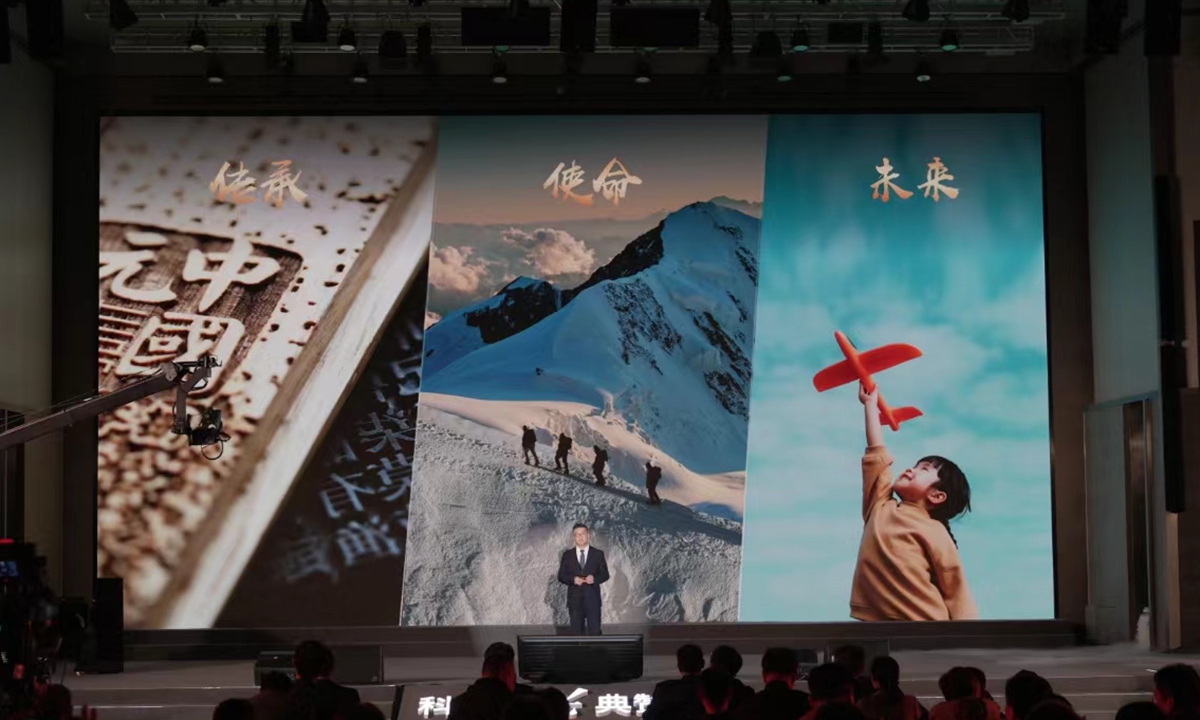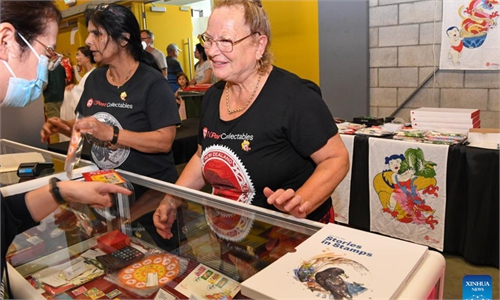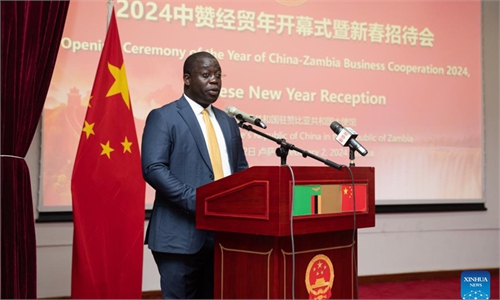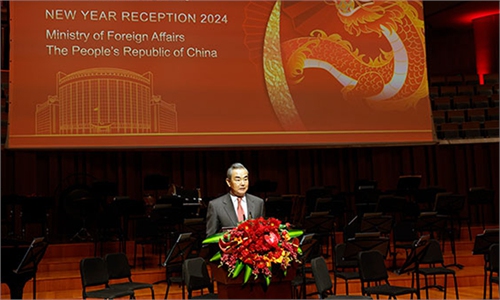IN-DEPTH / IN-DEPTH
Feeling Beijing's science and technology innovation upsurge in Zhongguancun

Photo: Courtesy of Beijing Association for Science and Technology
While the atmosphere to welcome the 2024 Spring Festival is rising, so is the atmosphere of scientific and technological innovation in Beijing.
A group of science and technology workers in Beijing gathered at the exhibition center of the Zhongguancun National Independent Innovation Demonstration Zone to share their stories and experiences on their scientific research process. Zhongguancun is China's first national independent innovation demonstration zone.
The Global Times reporter not only felt the personal warmth of science and technology workers, but also learned about the important breakthroughs that China has made in many fields of science and technology through their introduction.
Energy consumption is an important standard for evaluating chips and other electronic components, and it is also a difficulty over which global enterprises keep competing with each other fiercely.
Low-energy consumption chips cannot be achieved without low-power conductor materials. Yao Yugui, Dean of the School of Physics at the Beijing Institute of Technology, has always been looking for the latter. In 2011, Yao, together with some other scientists, proposed that graphene-like materials - silicene, germanene, and tinene - are two-dimensional topological insulators. If the prediction is confirmed, it means that the graphene-like material is likely to become a low-power conductor material.
"Fortunately, in 2023, some parts of the prediction had been confirmed. Although it took us 12 years and may take longer for the world to conform the whole prediction as correct, we will continue to make persistent efforts, no matter how long it will take," Yao said at the Friday event.
Baihetan Hydropower Station is a mega project in China's west-east power transmission program, which aims to transmit electricity from the resource-rich western part of China to energy-hungry regions in eastern China. It is the largest and most technically complex hydropower project under construction in the world.
Zhou Hong, director of the comprehensive department of the China Institute of Water Resources and Hydropower Research, said at the Friday event scene that there are more than 7,000 thermometers and 80,000 meters of optical fiber, which are like "nerve endings" all over the dam and can sense important indicators such as temperature and humidity in real time.
In the vast space, the BeiDou Satellite Navigation System is also tracking the concrete pouring of the dam, the system relays information to the dam's "nerve center" - China's independently and domestically developed IDam control system. Whenever the dam has a "fever," the system will immediately warn and make automatic decisions. It will accurately adjust the water temperature, water spray, the amount and direction of water flow in the first place to ensure that the dam is comfortable at normal temperature. And the above technology has also solved the world problem of dam cracks.
From the science and technology workers in the capital, the Global Times reporter felt the spirit of science and technology.
Zhou Zhonghe, an academician from the Chinese Academy of Sciences, paleontologist and chairman of the Chinese Science Writers Association, has been dealing with fossils for 40 years. "I often dream of excavating scenes in the wild, and the happiest thing in my dream is to find good fossils. This joy of exploring the unknown, in my opinion, is the most satisfying thing to pursue in a lifetime," Zhou told the audience.
"A major figure in the scientific community should have profound research, should contribute to science popularity, should have pure belief, and should bear his or her country in mind, I also would like to truly become such a person, along with all of you, to do well in scientific research, while don't forget science popularization and science education," he said.
Li Jinglin, director of the Switching and Intelligent Control Research Center of the Beijing University of Posts and Telecommunications, is one of the thousands of professions that the Beijing government assigns to local technologically innovative enterprises in a move to better serve the latter's demand.
Li said his value is to solve 5G technology problems for industries and enterprises, and he calls himself "an ordinary scientific research worker in the network communication industry."
"From questioning, to turning the impossible into the possible, from being blockaded to surpassing international standards, China is building on the world stage with a new look. This process is not easy, but the more difficult it is, the more excited we are, because every difficulty we overcome means another step forward. I believe that with the efforts of generation after generation of engineers, China's construction will surely move to a higher level in the future, create more classic buildings, and leave more Chinese architectural heritage for the world," Li Jiulin, chief engineer of Beijing Urban Construction Group Co., Ltd., who participated in the construction of venues for bother the 2008 Beijing Summer Olympic Games and the 2022 Beijing Winter Olympic Games, shared at the scene.
The Global Times reporter noted that the pace of scientific innovation in Beijing is continuously moving forward. On January 25, the second session of the 16th Beijing People's Congress voted to pass Regulation on the Construction of Beijing International Science and Technology Innovation Center, which will provide a systematic and continuous legal guarantee for the construction of an international science and technology innovation center.
In November 2023, according to the 2023 International Science and Technology Innovation Center Index and the Nature Index Science Cities 2023 report jointly released by Tsinghua University and Springer Nature Group, Beijing ranked the third international scientific and technology innovation center and the first science city in the world.
The Friday event is held by the Beijing Association for Science and Technology as part of its New Year of Science project to welcome 2024 in order to praise science and technology workers in Beijing, and contribute to the construction of the Beijing International Science and Technology Innovation Center.
Science and technology workers in Beijing invited to share their stories during scientific research to demonstrate the core role of science and technology in the high-quality development of China's capital.
Global Times



